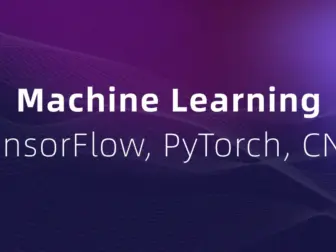Tag - PyTorch
AI and Machine Learning, Blog , February 17, 2025 , AI Frameworks, Computer Vision, Deep Learning, Edge Computing, Medical Imaging, Model Deployment, ONNX, PyTorch, Speech AI, TensorFlow
Blog , May 29, 2024 , Computer Vision, Keras, Machine Learning, Model Training, OpenCV, OpenMV, PyTorch, TensorFlow, Tool Comparison
Blog , May 29, 2024 , Computer Vision, Embedded Applications, Keras, Machine Learning, Model Training, OpenCV, OpenMV, PyTorch, Real-Time Object Detection, TensorFlow
Exploring the Power of PyTorch: A Comprehensive Guide
Exploring the Power of PyTorch: A Comprehensive Guide
PyTorch is an open-source machine learning library developed by Facebook’s AI Research lab. It is gaining popularity among researchers and developers due to its flexibility, ease of use, and dynamic computation graph. PyTorch provides a rich set of tools and libraries that make it easier to build and train deep learning models. In this comprehensive guide, we will explore the power of PyTorch and how it can be used to develop state-of-the-art machine learning models.
One of the key features of PyTorch is its dynamic computation graph, which allows for more flexibility and control compared to static computation graphs used in other deep learning frameworks like TensorFlow. With PyTorch, you can define and modify your neural network architecture on-the-fly, making it easier to experiment and iterate on different models.
PyTorch also provides a wide range of pre-built modules and functions that simplify the process of building deep learning models. These modules include various layers, activation functions, loss functions, and optimizers that can be easily integrated into your neural network architecture. Additionally, PyTorch supports GPU acceleration, allowing you to train your models faster and more efficiently.
Another advantage of PyTorch is its seamless integration with popular libraries like NumPy and SciPy. This makes it easier to preprocess and manipulate data before feeding it into your neural network. PyTorch also provides tools for data augmentation, visualization, and debugging, making it easier to analyze and understand your data.
Training deep learning models with PyTorch is also straightforward, thanks to its intuitive API and extensive documentation. You can easily define your model, specify your loss function and optimizer, and train your model using just a few lines of code. PyTorch also provides utilities for saving and loading trained models, making it easier to deploy your models in production environments.
PyTorch is not only limited to traditional deep learning tasks like image classification and natural language processing. It also supports more advanced techniques like reinforcement learning, generative adversarial networks (GANs), and transfer learning. With PyTorch, you can explore cutting-edge research in the field of machine learning and implement advanced models with ease.
Overall, PyTorch is a powerful and versatile deep learning library that is well-suited for both beginners and experienced machine learning practitioners. Its dynamic computation graph, rich set of tools and libraries, and seamless integration with popular libraries make it a preferred choice for developing state-of-the-art machine learning models. Whether you are a researcher, developer, or data scientist, PyTorch has everything you need to take your deep learning projects to the next level.



